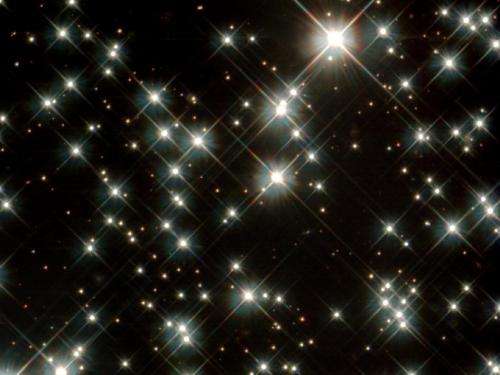Ancient white dwarf stars

(PhysOrg.com) -- Pushing the limits of its powerful vision, NASA's Hubble Space Telescope uncovered the oldest burned-out stars in our Milky Way Galaxy in this image from 2002. These extremely old, dim "clockwork stars" provide a completely independent reading on the age of the universe without relying on measurements of the expansion of the universe.
The ancient white dwarf stars, as seen by Hubble, turn out to be 12 to 13 billion years old. Because earlier Hubble observations show that the first stars formed less than 1 billion years after the universe's birth in the big bang, finding the oldest stars puts astronomers well within arm's reach of calculating the absolute age of the universe.
Though previous Hubble research sets the age of the universe at 13 to 14 billion years based on the rate of expansion of space, the universe's birthday is such a fundamental and profound value that astronomers have long sought other age-dating techniques to cross-check their conclusions.
The new age-dating observations were done using Hubble to hunt for elusive ancient stars hidden inside a globular star cluster located 5,600 light-years away in the constellation Scorpius.
Provided by JPL/NASA

















